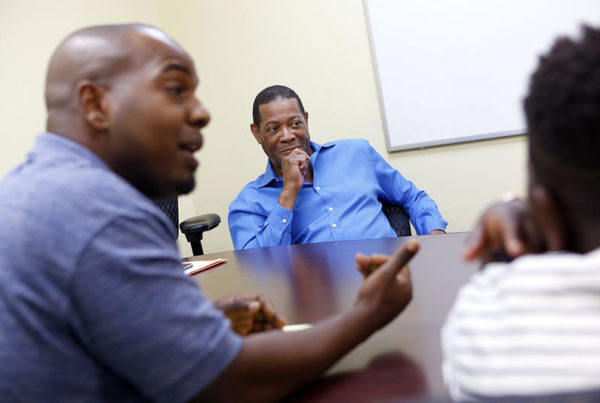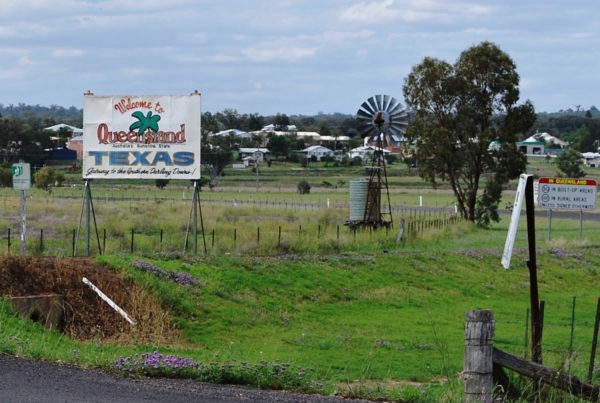Two Texas teams are heading to California to compete in this weekend’s SpaceX hyperloop competition.
Four years ago, SpaceX founder Elon Musk published a white paper outlining a new concept in mass transit. The idea is to shuttle people around in pods, traveling at high speeds. Since Musk made his proposal, engineers have been working to perfect that technology, hoping to make the hyperloop a reality.
Tucked away on the UT-Austin campus is what used to be an old gym. The basketball nets are gone, and the place is now filled with workspaces for engineering students. One of these is home to the 512 hyperloop team. They’re doing some final calculations and putting on some finishing touches.
“I think on the whole we’re probably about three-fourths done. But we’re an undergraduate team and we’re really good at doing things at the last minute, so we’re going to wrap it up here,” says John Sigmon with 512 Hyperloop.
In true college student fashion, the team has finished its design in a matter of weeks. They’re all set to compete this weekend.
Eric Simmons says the goal is to build the fastest pod. He is in charge of the pod’s suspension system.
“Basically, the concept is that SpaceX is building a test track in front of their facility in LA, and we have to design a pod that will go on this test track, and we’re trying to go fast as possible,” Simmons says.
That’s the whole point of the technology – speed. As in, Dallas to Austin in 25 minutes kind of speed.
Elon Musk introduced the hyperloop idea in 2013. He said he wanted to move people around in pods that traveled at high speeds inside sealed, depressurized tubes. Pods would levitate above the tracks.
There are essentially two ways to do levitation.
“Some teams are using air bearings, which are basically like an air hockey table effect. We specifically are using magnetic levitation,” Simmons says.
He says most teams are going that route – using maglev technology. It’s just easier and more feasible. The technology is already widely used by bullet trains, and Simmons says he thinks it would be easier to develop hyperloop on a larger scale, using maglev. Not that his team didn’t try to use air bearings – at least, at first.
“I designed the old air bearing system too, and it was a disaster, because the air bearings require the track to be perfect, like perfectly flat,” he says.
The other Texas team headed to this weekend’s competition is trying to overcome those hurdles. They call themselves Guadaloop
“I think there are only like four teams using air bearings because I think maglev is the more reliable technology,” says Nichole Foster, with Guadaloop.
“Going in and saying I want to levitate something with air bearings is completely new, no one’s ever done it before,” Foster says.
The idea with air bearings is to float the pod over the track on a cushion of air. Right now, the technology is mainly used in moving heavy equipment at low speeds over short distances. But remember – the goal here is speed – lots of speed. The challenge for Guadaloop, is to take that existing concept and apply it to their pods.
James McGinnis is also with Guadaloop. He says the original plans in Musk’s white paper included using air to move the pod, and that’s something they wanted to stay true to. In addition, it could be cheaper to implement than outfitting tracks with magnets.
“Going with air bearings was, I think in retrospect, it didn’t feel like an easy decision,” McGinnis says “but it was like the only decision that could be made, given with what we wanted to accomplish.”
The goal for them is less about winning based on speed – even though that’s technically the only criteria SpaceX is looking at during the competition. The Guadaloop team is more interested in developing the air bearing technology, even as a lot of engineers focus more on maglev.
“Sort of no one’s gone fast on air bearings before, and we kind of want to be the first to show, even if we go a modest 100 miles an hour, lay enough of groundwork for people to revisit and say hey maybe we should take a closer look at air bearings and really develop out the technology,” McGinnis says.
But he admits that winning would be pretty cool too
What exactly *is the prize for winning?
“We’re not getting anything. But really it’s a global competition, you have teams from all over the world, like truly all over the world coming. Really it’s for the glory,” says Eric Simmons from 512 Hyperloop.
Developing technology to zip people across the state in the fraction of the time required to drive, traffic-free? Yeah, that sounds pretty glorious.
















